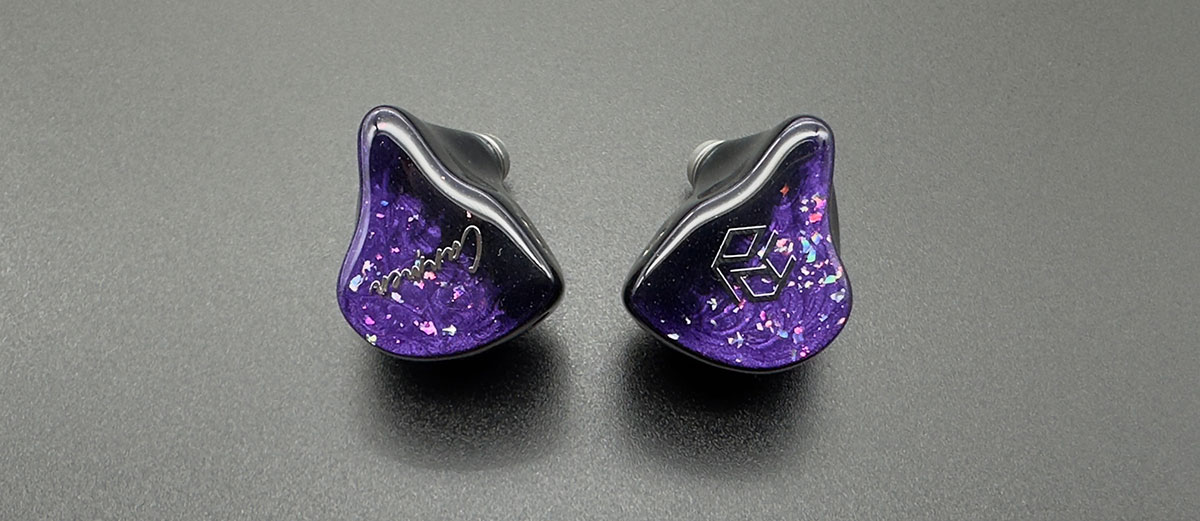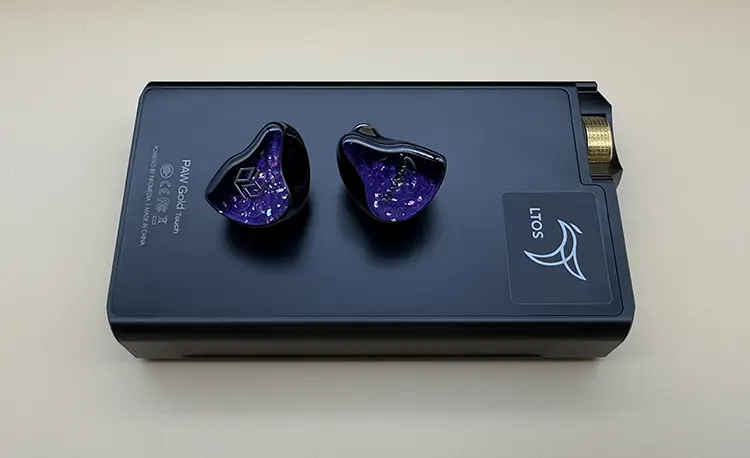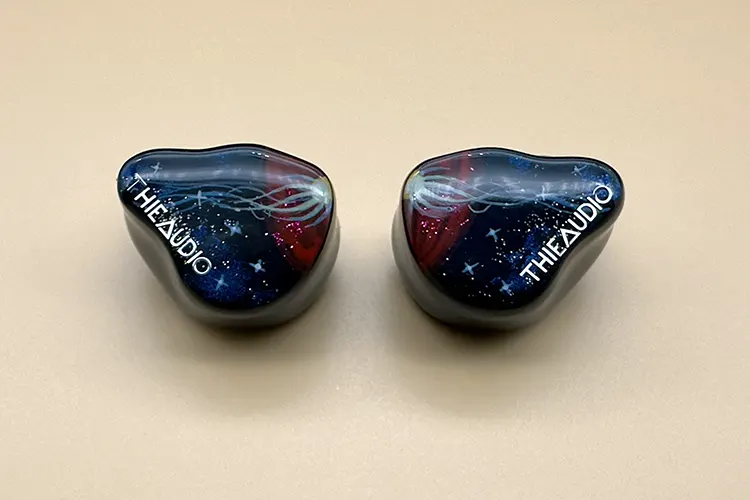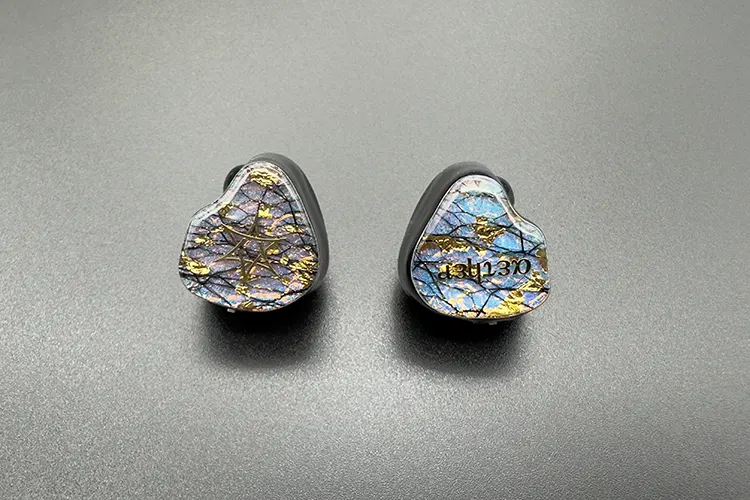Synergy
Efficiency
Yanyin Carmen has an impedance of 10Ω @ 1 kHz and a sensitivity rating of 109 dB/Vrms. The IEM can be very comfortably driven by sources with fewer power specifications, such as dongles and smartphones. It does not need any extra power to shine.
When paired with high-quality devices like the Lotoo Paw Gold Touch (LPGT) or Questyle CMA18P, the sound becomes more spacious, with richer tonal weight and an improved sense of separation.
However, the sound loses much of its depth and expansiveness when connected to weaker sources like smartphones or basic dongles.
Source Pairings
From my experience with Carmen, I’ve concluded that source choice is crucial. Carmen pairs best with neutral or slightly bright sources; with warmer sources, it can sound blurred, requiring a clean source for ideal synergy.
Paired with the LPGT, Carmen gains warmth, which may not suit listeners seeking airiness and neutrality. While the technical performance remains strong, it lacks some openness.
The LPGT provides ample power and warmth, creating a lush, balanced sound. Bass is full-bodied with excellent texture and layering, though the treble, while smooth, lacks some desired airiness. The LPGT’s soundstage depth does enhance the overall presentation.
With the Questyle CMA18P, Carmen achieves a spacious sound with noticeable soundstage depth. The bass retains punch and has a quicker decay than the LPGT, resulting in a more open sound.
While the LPGT slightly edges out in detail and soundstage depth, the CMA18P’s reduced warmth improves clarity, especially in the upper mids, where details are more pronounced.
The Earmen Angel, a powerful source, also pairs well with the Carmen. Here, the bass softens and loses some impact compared to the CMA18P, but the midrange benefits from added neutrality, reducing warmth, and enhancing clarity and airiness.
Female vocals, in particular, are rendered beautifully, with a crispness in midrange instruments that adds to the listening experience. The Gain+ mode on the Angel further boosts soundstage width and height, and its less warm profile makes this pairing one of my favorites.
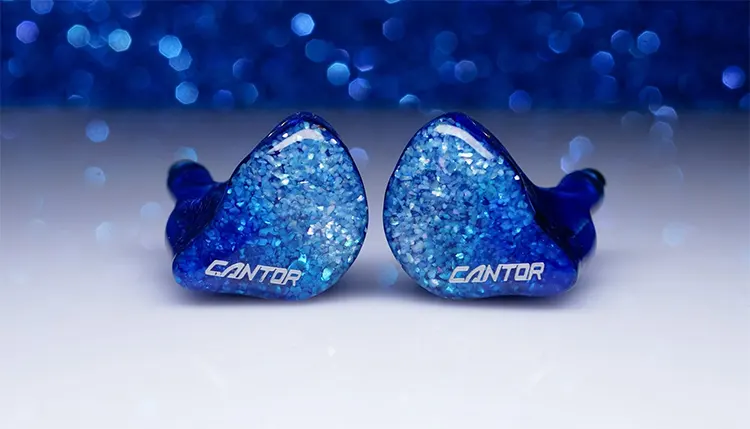
Select Comparisons
AFUL Cantor
Technical
The Cantor is the latest flagship IEM from AFUL. It incorporates fourteen balanced armature drivers per side.
With an impedance of 20 Ω and sensitivity of 106 dB/mW @ 1 kHz, it’s easy to drive, much like the Carmen. Both models don’t need a lot of power to perform and maintain a full sound even at lower volume levels.
One of the standout technical aspects of the Cantor, given its high driver count, is its advanced crossover network, which ensures smoother frequency distribution.
Additionally, the inclusion of RLC Network Frequency Division Correction Technology helps minimize resonance peaks and contributes to a smoother treble response, enhancing the overall listening experience.
Design
Both the Cantor and Carmen feature resin shells of a similar size. The Cantor sports a pleasant aesthetic, especially with the version I tried called Marine Echo, a beautiful ocean-blue shell with shimmering glitters on the faceplate.
There’s also another variation named Starry Nights, which offers a different faceplate pattern. The faceplates on both models feature an eye-catching sparkle, which adds a touch of elegance to their designs.
A notable design feature of the Cantor is its metallic nozzle, which at first glance appears long but is completely covered by the ear tip once fitted, creating the illusion of a shorter nozzle.
It’s narrow and is part of the tuning mechanism, designed to improve acoustic performance, boosting resolution and clarity.
Both IEMs use 0.78mm 2-pin connectors. Cantor’s cable is braided in soft nylon fabric, offering a pleasant feel and decent build.
I prefer the cable on the Carmen for its slightly superior build quality and aesthetics of a traditional cable. Both stock cables come in a non-modular design with multiple termination options available when you order.
The Cantor packaging outshines the Carmen with its superior presentation. The Cantor arrives in a more premium package, complete with a spacious leather box and multiple sets of ear tips, making it a better unboxing experience overall.
Performance
The Cantor has a more familiar tonality and less experimental tuning than the Carmen, delivering an energetic, treble-focused sound with good resolution.
It’s a solid choice for those who enjoy clarity and high-frequency energy, while the Carmen offers a more laid-back tuning with greater sub-bass emphasis and thicker mids.
The Cantor’s bass is tighter and more controlled compared to the Carmen’s, which has a thicker, warmer bass. The Cantor excels in texture and definition, providing a more refined bass experience.
While the Carmen has a slight edge in sub-bass impact, the Cantor offers quicker bass decay and a more rounded performance.
In the midrange, the Cantor provides greater clarity, and a more neutral tonality compared to the Carmen’s warmer sound. Some may prefer the fuller, denser vocals of the Carmen, but the Cantor leads in naturalness and transparency.
The Cantor’s upper midrange is also more extended and energetic, though it can occasionally verge on shoutiness, especially in female vocals. Overall, the Cantor’s midrange clarity stands out.
The Cantor’s treble is pronounced and detailed, delivering strong resolution. Compared to the Carmen, the Cantor’s treble can sometimes feel slightly exaggerated, though it appeals to treble enthusiasts.
Carmen’s treble, by contrast, is more subdued, providing a more laid-back experience for those sensitive to high frequencies.
The Cantor emphasizes staging width, while the Carmen focuses more on depth. The Carmen’s spacious soundstage allows for better instrument separation, giving each element more distinction, though it sacrifices some micro-details. The Cantor takes the lead for resolution, offering greater precision in detail retrieval.
THIEAUDIO Hype 10
Technical
The THIEAUDIO Hype 10 is a hybrid IEM featuring dual dynamic and ten balanced armature drivers. It incorporates the IMPACT2 technology common in the other Hype series IEMs, Monarch MKIII, and Oracle MKIII.
Hype 10 implements two dynamic drivers and ten balanced armatures. In the low-frequency region, Hype 10 incorporates two Sonion balanced armature and dual dynamic drivers.
Hype 10 has an impedance of 18Ω @ 1 kHz and a sensitivity rating of 104 dB/Vrms making it as easy to drive as the Carmen.
Both of them do not require a lot of extra juice and can sound full on lower volume levels. I listen to the Carmen with a few clicks less than the Hype 10.
Design
Both IEMs feature similar resin shells, with the Carmen having smaller shells. The faceplates of Hype 10 showcase an artistic, cosmic-inspired design with subtle shimmers, which I find as beautiful as it is on the Carmen.
Each IEM provides a comparable level of comfort. In terms of design, I find both similar with not much of a difference. The Carmen has a better fit owing to its smaller shells. The nozzle on Hype 10 is just a bit shorter and larger in diameter.
Both the Hype 10 and Carmen use a 0.78mm 2-pin connector, but the Hype 10 offers a modular cable with interchangeable terminations, including 4.4mm, 3.5mm, and 2.5mm options. In terms of build quality, the Carmen cable is better.
In terms of packaging, Hype 10 offers a better experience. It comes in a large, spacious box with the thoughtful inclusion of a large carry case and an extra set of foam ear tips.
Performance
The Hype 10 delivers a warm sound signature with a near-neutral tilt. While it doesn’t fully commit to neutrality, it presents a smooth and rich midrange and treble without leaning toward an analytical profile. In contrast, the Carmen offers a more colored sound with additional warmth.
When it comes to the bass, the Carmen has slightly more sub-bass presence, but the Hype 10 shines in the mid-bass impact, giving its bass more body and weight.
Carmen’s mid-bass is less pronounced, which may leave some listeners wanting more. The Hype 10’s bass is also tighter and faster, with superior texture and layering.
In the midrange, the Hype 10 leans toward a mostly neutral presentation, with slightly less emphasis in the lower midrange compared to the Carmen. This gives Carmen’s lower mids more weight, resulting in a denser, richer character, especially noticeable in vocals.
Vocals on the Carmen are a bit more forward, with thicker note weight in the midrange instruments. The Hype 10’s midrange, however, is cleaner and more precise. The Hype 10’s upper midrange is more extended and detailed, though it can come across as thinner in comparison.
The Hype 10’s treble has a better level of airiness and detailing in comparison. If you enjoy a bit more energy in the treble, Hype 10’s presentation will likely appeal to you more. Carmen falls behind a lot in the treble region, offering an even smoother presentation lacking energy.
In terms of technical performance, both IEMs have their strengths. The Hype 10 excels with a greater sense of refinement, revealing micro-details more clearly and handling complex passages better.
The soundstage is similar in width for both, though the Carmen offers slightly more depth. Instrument separation is equally strong in both models, ensuring a well-organized and immersive sound.
Flipears Aether
Flipears is an IEM brand from the Philippines. They specialize primarily in building custom IEMs and have put focus on their universal IEM offerings too.
Technical
Aether is an all-BA IEM featuring 4 customized Sonion BA drivers. The customization is done primarily to produce a cleaner sound and mimic a dynamic driver’s bass.
Aether has a sensitivity of 109 dB/mW. The IEM is quite efficient to drive and does not demand any additional power. Aether comes with a bass boost switch on each side of the IEM.
With the switch off, the bass is mostly neutral. The switch gives a 5 dB boost and makes the lower end well-rounded and impactful.
These IEMs implement a nozzle design known as the Conoid Resonative Chamber (CRC). The CRC is specifically engineered to elevate the acoustics and sound quality of the audio device.
The term “conoid” denotes its unique shape, typically conical or dome-like. This chamber is designed to resonate with and enhance particular frequencies of sound, leading to an enhanced frequency response.
Design
When it comes to build quality, both IEMs feature similar resin shells, with shells of comparable size. The faceplate on the Aether features an artistic abstract design that shines in different colors depending on the angle you view.
In terms of fit, Carmen has an edge as the Aether has a massive nozzle, which can pose a challenge. Someone who has a smaller ear cavity will have issues with the Aether’s fit.
Aether connects via a 0.78mm 2-pin connector. The cable on Carmen is of better quality and has a firmer character. The cable quality of Aether is not quite good. It is one of the basic ones.
In terms of packaging, Flipears provides a decent set of accessories. There are three sets of in-house ear tips and a special Eletech Baroque ear tip. The case that comes with the Aether is rectangular and built from leather. It has a nice finish and feels premium.
Performance
The Aether offers a warm, pleasing sound with decent resolution, leaning more toward warmth compared to the Carmen. Its tuning is generally balanced, with an emphasis on mid-bass in the lower frequencies.
The mids are lush, natural, and accurate, while the treble remains smooth, avoiding harshness yet maintaining a reasonable amount of energy. Although Aether and Carmen share some tuning characteristics, they differ in key areas.
In the bass region, the Aether lacks the sub-bass depth and impact of the Carmen but excels in mid-bass impact, delivering a punchier experience.
Engaging the Aether’s bass switch further emphasizes mid-bass, though it can start to bleed into the upper frequencies. In contrast, the Carmen offers a more structured bass with a rounded, tighter feel and faster decay.
The midrange of the Aether has a natural tonality, but its warmth can overshadow finer details that Carmen articulates more clearly. While Aether’s mids have good body and engaging vocals, the Carmen provides better bass shelf separation, making the Aether’s lower midrange feel thicker and less clean.
This thickness slightly affects vocal clarity, though vocals become richer when the bass is less pronounced. The upper midrange on the Aether also lacks the extension seen in the Carmen.
In the treble, Carmen leads with a more open, airy response and a noticeable sparkle, while the Aether’s treble feels slightly muted, lacking Carmen’s extension.
Technically, the Carmen edges ahead with a wider soundstage, though both offer similar depth. Carmen also performs better in complex passages, with clearer instrument separation, detail retrieval, and slightly superior imaging, offering a more refined, accurate musical picture.
My Verdict
As I mentioned earlier, I had high expectations for this release, largely due to the positive reception of the previous Yanyin Canon II.
However, my feelings about Yanyin Carmen are mixed. I appreciate that Yanyin experimented with this model, aiming to create a unique presentation. The tonality it offers could be either a hit or a miss, depending on the listener’s preferences.
There are certain aspects Yanyin executed well. For example, the bass is impressive for an all-BA configuration, and the vocals have a degree of prominence that adds character to the sound. The relaxed tuning also makes it suitable for long listening sessions.
However, there’s nothing particularly exciting about this release, especially when considering the strong competition in this price range—it’s hard to ignore some of the better alternatives available.
One major downside is the lackluster accessory selection, which feels underwhelming at this price point. That said, I’m sure there’s an audience that will appreciate Carmen’s tuning; I’ve already encountered a few people who genuinely enjoy it.
If you’re considering purchasing the Yanyin Carmen, I strongly recommend trying it out first to understand its offerings. Additionally, as I mentioned before, the choice of source can significantly impact the IEM’s performance, so experimenting with different sources is advisable.
Yanyin Carmen Specifications
- Driver Configurations: 10 Balanced Armature Drivers
- Frequency Response: 5 Hz – 25 kHz
- Impedance: 10Ω @ 1kHz
- Sensitivity: 109 dB @ 1kHz
- Crossover: 4 electronic crossovers + 4 physical duct crossovers
- Cable: Single Crystal Copper, Single Strand 22AWG, 140 cores
- (Available in 2.5mm, 3.5mm, and 4.4mm terminations)

